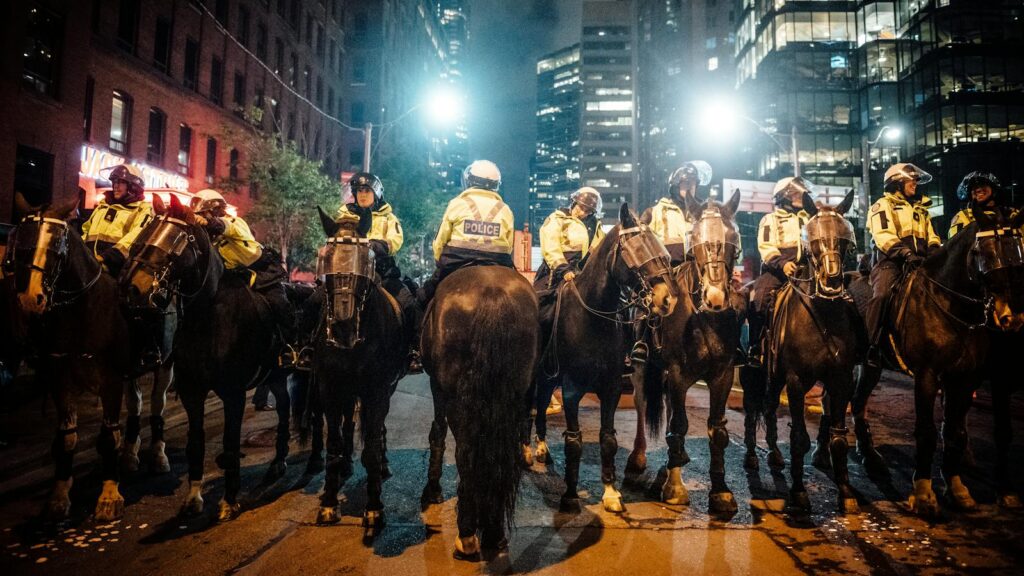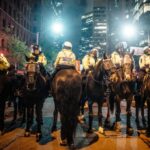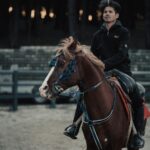In an age of advanced technology, sophisticated surveillance systems, and rapid-response vehicles, the sight of police officers on horseback might seem like a quaint remnant of a bygone era. However, mounted police units continue to serve vital functions in urban environments worldwide, combining traditional methods with modern policing strategies. While many law enforcement agencies have modernized their equipment and tactics, mounted units have demonstrated remarkable staying power and effectiveness in contemporary urban settings. This article explores the continued relevance and unique advantages of mounted police in today’s cities, examining how these specialized units contribute to public safety, community relations, and effective policing in ways that modern alternatives simply cannot replicate.
The Historical Evolution of Mounted Police

Mounted police units trace their origins back to the early days of organized law enforcement, when horses provided the most efficient means of patrol and pursuit. In the United States, the first official mounted police unit was established in 1871 in New York City, primarily to patrol the expanding outer reaches of the metropolitan area. Throughout the late 19th and early 20th centuries, horses were essential for police work, allowing officers to cover large areas quickly and maintain a visible presence in communities. As cities grew and technology advanced, many predicted the obsolescence of mounted units, particularly with the introduction of patrol cars in the 1920s and 1930s. Despite these technological innovations, mounted units adapted their roles rather than disappearing, evolving to meet changing urban needs while preserving their distinct advantages in specific policing contexts.
The Unique Vantage Point Advantage

One of the most significant advantages mounted officers possess is their elevated position, approximately 8-10 feet above ground level. This height advantage provides officers with a substantially improved field of vision compared to their counterparts on foot or in vehicles, allowing them to see over crowds and observe activities across greater distances. During public gatherings, sporting events, or demonstrations, mounted officers can effectively monitor situations developing several blocks away and identify potential issues before they escalate. This visibility works both ways—citizens can also easily spot mounted officers in crowds, making it simpler to locate help when needed. The tactical advantage of this elevated perspective cannot be overstated in urban environments where situational awareness is crucial for effective policing and public safety.
Crowd Management and Control Capabilities

Perhaps the most recognized application of mounted units in modern cities is their unparalleled effectiveness in crowd management situations. A single mounted officer can effectively do the work of 10-15 officers on foot when controlling large gatherings. The imposing presence of a horse, which typically weighs between 1,000-1,500 pounds and stands over 16 hands high, creates a natural psychological barrier that helps establish boundaries and maintain order without necessarily requiring force. Studies have shown that crowds naturally part and move back when mounted officers approach, creating space and reducing density in potentially dangerous crowd situations. During major events like parades, protests, or sports championships, mounted units can gently guide crowd movement, create corridors for emergency access, or separate conflicting groups with minimal confrontation or use of force.
Community Policing and Public Relations

Mounted police units serve as exceptional ambassadors for law enforcement agencies, creating positive interactions between officers and the public. The presence of horses naturally attracts attention and interest, facilitating conversations that might not otherwise occur between citizens and police. Children and adults alike are drawn to the horses, creating organic opportunities for officers to engage with community members in non-confrontational, positive contexts. These interactions help humanize police officers and build trust within communities, particularly in neighborhoods where relations with law enforcement may be strained. Many mounted units actively participate in community outreach programs, visiting schools, hospitals, and community events, where their approachable nature helps break down barriers and foster goodwill in ways that traditional patrol officers often cannot achieve.
Accessibility in Challenging Urban Environments

Modern cities present numerous environments where traditional police vehicles cannot easily operate, but mounted units excel. Horses can navigate narrow alleyways, crowded pedestrian zones, parks, beaches, and other vehicle-restricted areas with ease. In dense urban centers with significant foot traffic, mounted officers can move more efficiently than officers in cars who might be constrained by congestion or limited parking. During emergencies or natural disasters when roads become impassable to vehicles due to debris, flooding, or power outages, mounted units can continue operating effectively. This mobility advantage was dramatically demonstrated during events like Hurricane Katrina and Superstorm Sandy, when mounted officers could reach areas cut off from vehicular access, providing crucial emergency services and conducting welfare checks in isolated communities.
Environmental and Economic Benefits

In an era of increasing environmental consciousness, mounted police units offer a surprisingly green alternative to motorized patrols. Horses produce no carbon emissions during operation and require no fossil fuels, contributing to police departments’ sustainability goals. While the initial costs of establishing a mounted unit are substantial, including purchasing horses, equipment, and specialized training, the ongoing operational expenses can be comparable to or less than maintaining patrol vehicles when factoring in fuel, insurance, and frequent replacement costs. Many mounted units have successfully established partnerships with local businesses, equestrian organizations, and community supporters to offset costs through sponsorships and donations. Additionally, horses typically remain in service for 15-20 years, substantially longer than the 3-5 year average lifespan of a patrol car, providing long-term value for police departments willing to make the initial investment.
Tactical Applications in Modern Policing

Beyond their traditional roles, mounted units have developed specialized tactical applications suited to contemporary urban challenges. Horses can be trained to remain calm in chaotic environments with loud noises, flashing lights, and unpredictable movements, making them valuable assets during crisis situations. Their height and mobility allow mounted officers to quickly pursue suspects through areas inaccessible to vehicles, such as parks, pedestrian plazas, or crowded streets. Some departments have developed innovative approaches incorporating mounted units into anti-crime initiatives, using their elevated vantage points for surveillance operations targeting drug dealing, auto theft, and other street crimes. In cities with extensive park systems or wilderness areas within their jurisdiction, mounted units provide effective patrol capabilities across terrain that would otherwise require specialized off-road vehicles or time-consuming foot patrols.
Training and Specialization Requirements

Becoming a mounted police officer requires extensive specialized training beyond standard police academy instruction, creating a highly skilled subset of law enforcement professionals. Officers typically need to complete several hundred hours of equestrian training before being certified for mounted patrol duties, learning not only riding skills but also horse care, behavior management, and specialized tactical maneuvers. The horses themselves undergo even more rigorous preparation, with training periods often lasting 1-2 years before they’re ready for active duty in unpredictable urban environments. This training includes desensitization to urban stimuli like traffic, sirens, crowds, and loud noises, as well as specialized tactical movements for crowd control and pursuit situations. The significant investment in training creates officers with unique skill sets and horses with exceptional temperaments, resulting in highly effective partnerships capable of handling complex urban policing challenges.
Psychological Impact on Crime Prevention

The psychological impact of mounted police presence extends beyond crowd management to everyday crime prevention. Research has demonstrated that mounted patrols create a stronger perception of police presence than officers on foot or in vehicles, with citizens typically reporting that they notice mounted officers from greater distances and remember their presence more vividly. This enhanced visibility contributes significantly to the psychological deterrent effect on potential criminal activity. Studies examining crime rates in areas with regular mounted patrols have shown reductions in street crimes like drug dealing, theft, and vandalism. The commanding physical presence of an officer on horseback alters the risk calculation for potential offenders, who perceive a greater likelihood of detection and apprehension. Additionally, mounted officers’ elevated position reduces their vulnerability compared to officers on foot, creating a more authoritative presence that can de-escalate potentially volatile situations before they turn violent.
Challenges and Adaptations in Contemporary Cities

Despite their advantages, mounted police units face significant challenges in modern urban environments. Increasing vehicular traffic, disappearing green spaces, and budget constraints have forced mounted units to continuously adapt their operations and justify their existence. Many departments have responded by developing specialized niches where mounted units demonstrate clear advantages over other policing methods. Some units focus primarily on parks and public spaces, while others specialize in event management or community engagement initiatives. Administrative challenges include the significant logistical requirements for housing, transporting, and caring for police horses in urban settings where space is at a premium. Modern mounted units have addressed these challenges through innovative partnerships with private stables, parks departments, and even correctional facilities, where inmate work programs sometimes assist with horse care as part of rehabilitation initiatives.
Case Studies: Success Stories from Urban Mounted Units

Numerous modern cities provide compelling evidence of mounted police effectiveness through their continued investment in these specialized units. The New York Police Department’s mounted unit, one of the oldest and largest in the United States, demonstrates the continued relevance of horse patrols in even the most densely populated urban environment. Their mounted officers are regularly deployed to patrol high-tourist areas like Times Square, where their visibility serves both community policing and counter-terrorism objectives. In the United Kingdom, the success of mounted units was highlighted during the 2011 London riots, when mounted officers proved invaluable in controlling volatile situations where other police assets struggled to maintain order. The Vancouver Police Department’s mounted unit provides another success story, having evolved from its historical roots to become an integral component of the city’s community policing strategy, with documented success in reducing property crime rates in targeted patrol areas.
Technology Integration with Traditional Mounted Policing

Far from being technological anachronisms, modern mounted police units have embraced advanced technology to enhance their effectiveness. Many mounted officers now carry body cameras, tablet computers, and other digital tools that allow them to perform the same documentation and communication functions as their counterparts in vehicles. Some departments have equipped their mounted units with specialized saddle bags containing compact medical equipment, allowing them to serve as first responders in emergencies where their mobility advantages allow them to arrive before ambulances. Advanced communication systems, including Bluetooth-enabled helmets, keep mounted officers connected to dispatch and other units while maintaining situational awareness. GPS tracking technology is increasingly used to optimize patrol routes and document coverage areas, helping commanders deploy mounted resources more effectively and providing data to justify the units’ operational value during budget discussions.
Future Directions for Mounted Policing

The future of mounted policing likely involves continued specialization and strategic deployment rather than expansion to universal adoption. As police departments face mounting budget pressures and staffing challenges, mounted units must continue demonstrating their unique value proposition compared to other policing approaches. Many experts predict increased regional cooperation, with smaller departments pooling resources to maintain shared mounted units that can be deployed across jurisdictional boundaries for special events and emergencies. Technological integration will continue advancing, potentially including augmented reality displays in officer helmets to enhance situational awareness and communication. Training methodologies are evolving as well, with greater emphasis on the behavioral science of both horses and humans, creating more effective partnerships and intervention strategies. Despite ongoing challenges, the fundamental advantages mounted units provide in visibility, mobility, and community engagement suggest they will remain valuable assets in urban policing for the foreseeable future.
conclusion

While mounted police units may appear at first glance to be relics of a bygone era, their continued presence in modern cities reflects their enduring utility and adaptability. The unique combination of height advantage, psychological impact, community engagement potential, and specialized mobility capabilities ensures these units remain relevant in contemporary urban environments. As cities continue to evolve, mounted police units have demonstrated remarkable resilience by adapting their tactics, embracing technology, and identifying specialized roles where their advantages are most pronounced. The horse-officer partnership represents a successful blending of traditional methods with modern policing needs, proving that sometimes the most effective solutions aren’t always the newest ones. In our increasingly complex urban landscapes, mounted police units continue to earn their place as specialized assets that contribute significantly to public safety and community well-being in ways that cannot be fully replicated by other policing approaches.







